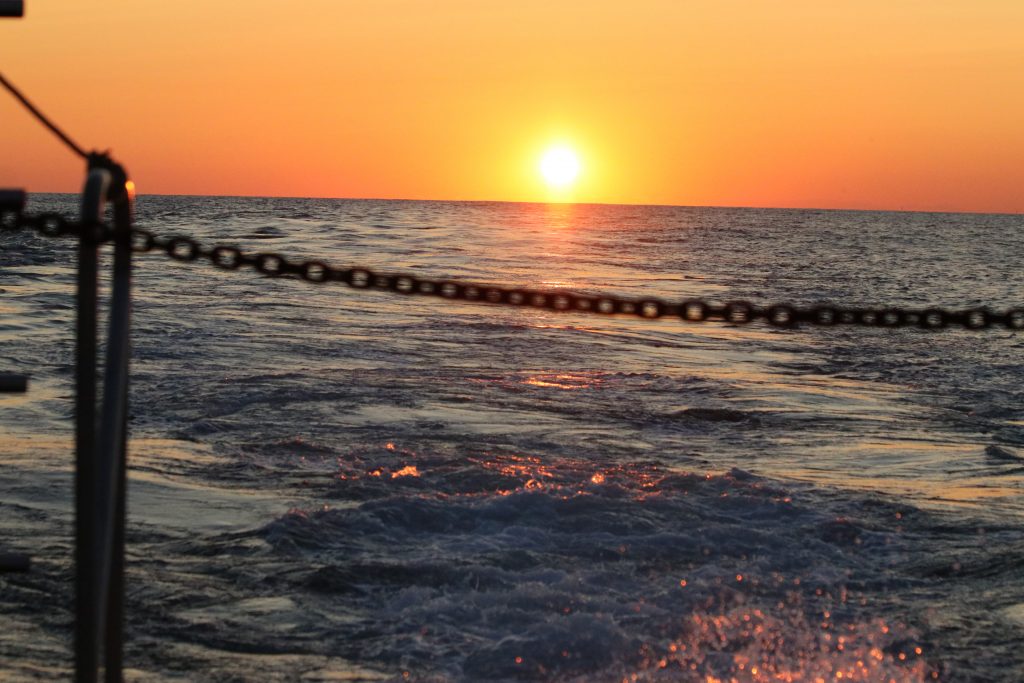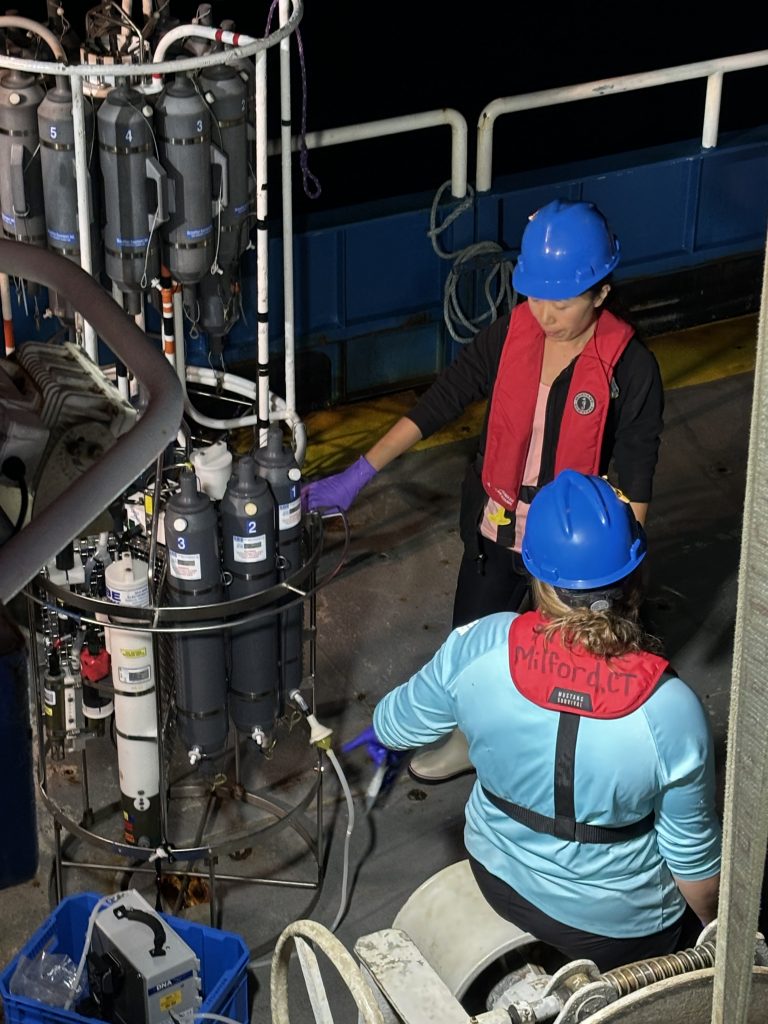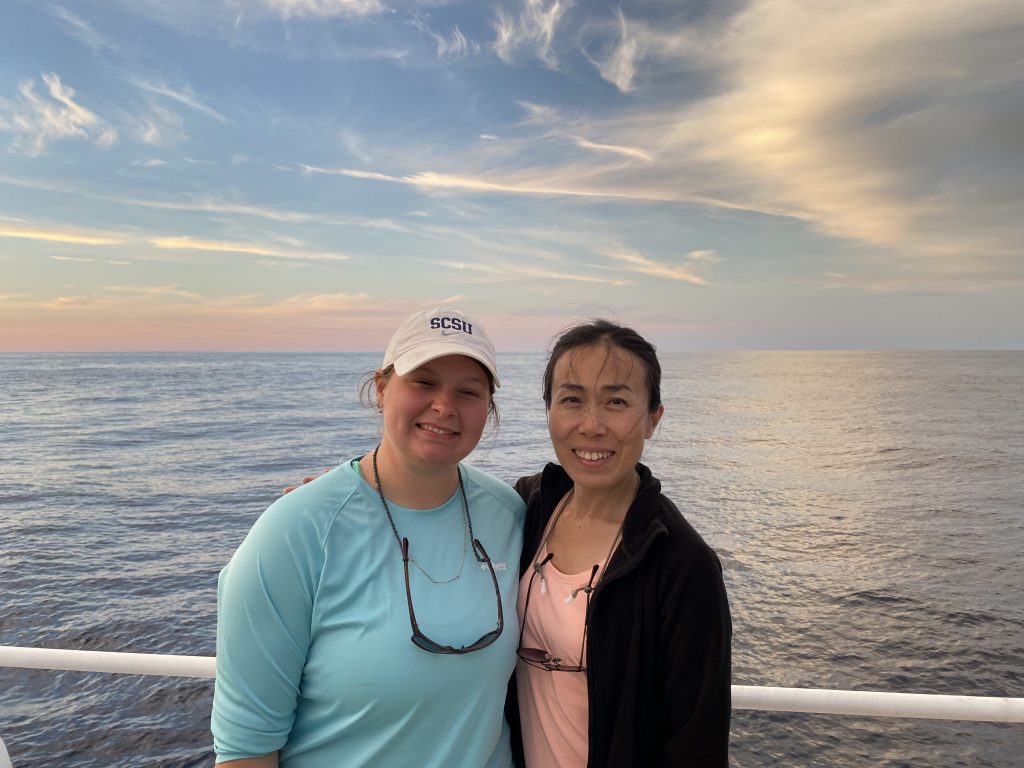I am a Master’s student in Southern Connecticut State University’s Integrative Biological Diversity Program. I have worked at the university’s Werth Center for Coastal and Marine Studies throughout undergraduate and graduate school. I participated in many studies there, including fieldwork onshore and on the water in coastal New England. Through the center, I met my Master’s thesis advisor Emma Cross, a professor and the center’s co-director. I first learned about environmental DNA while assisting in her lab’s field project, monitoring biodiversity near aquaculture sites using eDNA metabarcoding.
Through networking, I connected with Fish Biologist Yuan Liu of NOAA’s Northeast Fisheries Science Center, who leads their eDNA program. I reached out to learn more about how Yuan’s career path and experience helped her reach the position she has now. During this meeting, Yuan mentioned that she needed help carrying out her eDNA sampling on an upcoming research cruise and asked if I would be willing to assist her. The answer was a no-brainer — YES!
This internship experience is directly contributing to my success as a graduate student and beyond. I am also receiving internship course credit which counts toward my Master’s degree.
Where did we go and why?
We set out aboard the R/V Connecticut toward the Northeast Canyons and Seamounts Marine National Monument, 130 miles off the coast of Cape Cod, Massachusetts. This is the only Marine National Monument in the Atlantic. Scientists from NOAA, U.S. Fish and Wildlife Service, University of Connecticut, and Mystic Aquarium partnered to study this area over time.
They use multiple methods to measure biodiversity, how animals interact with living and nonliving members of the ecosystem, and community changes over time. The chief scientist of this expedition, Peter Auster from the University of Connecticut, describes the monument as an ocean wilderness, and it is teeming with marine life.



eDNA Sampling
We collected Yuan’s water samples for environmental DNA analysis using a Conductivity Temperature and Depth rosette. These tools have multiple Niskin bottles rigged onto a frame (the Rosette) and are lowered into the ocean as deep as its cable can reach. At the desired conductivity, temperature or depth, Niskin bottles were triggered to close and capture a water sample. I participated in the filtering process on this cruise, in which we used a Smith-Root eDNA Sampler to pump water collected in Niskin bottles through filters.
These filters have very small holes, or pores, which allow water to pass. Any particulates bigger than the pore size get stuck on the filter. This portable eDNA sampler is the first of its kind. Other methods to filter eDNA seawater samples include vacuum pumps or peristaltic pumps. All three filtration methods produce trustworthy results, but the applications of each are different. For maximizing the efficiency of time and space aboard research vessels, the Smith-Root eDNA Sampler works very well.
Life Aboard an R/V
This was my first research cruise spanning more than a day and I was curious how I would like it. I have done plenty of work on boats without getting seasick but that worry was on my mind. I was given great advice from the veteran scientists I sailed with: look at the horizon while on the boat, have motion sickness medication at the ready, and usually, the first day is the worst for motion sickness. It goes away as the body adjusts.
It was a privilege to sail with so many incredible scientists and educators. The experience of seeing scientists of varying career stages share the same sustained level of passion and excitement for the ocean has inspired me in countless ways. There were a slew of moments when everyone paused to admire gelatinous organisms that were freshly collected or video footage from scuba diving. This was a once-in-a-lifetime experience that I am grateful to have under my belt. I look forward to the next time I get to go on a research expedition.


